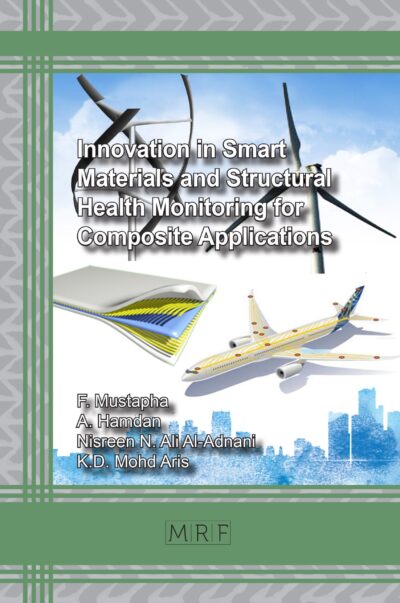Nanocomposites for Electrochemical Capacitors
Eds. Inamuddin, Mohammad Faraz Ahmer, Abdullah M. Asiri
Materials Research Foundations Volume 24
Publication Date 2018, 210 Pages
Print ISBN 978-1-945291-52-4 (release date January 15th, 2018)
ePDF ISBN 978-1-945291-53-1
DOI: 10.21741/9781945291531
Electrochemical capacitors or supercapacitors offer a number of advantages over batteries; they are more safe and reliable, charge quicker, have an indefinite lifespan, exhibit a high power density and a wide range of working temperature. Supercapacitors demonstrate an extraordinary potential in both consumer electronics and large-sized energy storage applications, e.g. in communications, transportation, aviation, and power industries.
The book explores recent developments in the area of composite applications for supercapacitor electrodes based von conducting polymers, graphene, biomass, or carbonaceous quantum dots. Synthesis strategies of composite materials and electrode preparation methods are discussed in detail.
Keywords
Electrochemical Capacitors, Supercapacitors, Energy Storage, Supercapacitor Electrodes, Conducting Polymer Composites, Graphene-based Composites, Biomass-based Capacitors, Carbonaceous Quantum Dot Composites, Sol-Gel Synthesis, Sonochemical Synthesis, Polyaniline-Zirconia Nanofibers, Nanocomposites for Electrochemical Capacitors
Table of Contents
Graphene-based supercapacitor: Fabrication and their properties
Jin-Gang Yu
Biomass-based sustainable electrode materials for electrochemical capacitors
Mohd. Khalid, Ana M.B. Honorato, Rajib Paul
Green sonochemical synthesis of conducting polymer/RuO2 composite granules as an efficient electrode for supercapacitor applications
P. Ramyakrishna, B. Rajender, A. Saran, M.F. Ahmer, Inamuddin
Metal oxide/hydroxide based materials for supercapacitors
S. Narayanan, R. Joseph
Investigation of cationic exchange activity and electrochemical performance of hybrid polyaniline-zirconia nanofibers
P. Ramyakrishna, B. Rajender, A. Saran, M.F. Ahmer, Inamuddin
Carbonaceous quantum dot composites for the application of electrochemical supercapacitors
P. Ramyakrishnaa, B. Rajender, B. Ravi, Inamuddin, M. Farz Ahmar
Sol-gel synthesis of transition metal oxides based electrode materials for supercapacitors
Dhiraj Sud
Conducting polymer composites for supercapacitors
Angesh Chandra, Archana Chandra
paperback flyer
ProtoView by Ringgold Clean Data
This collection assesses the current status of graphene-metal and graphene-polymer composites, biomass-derived activated carbons, transition metal oxides, hybrid polyaniline-zirconia nanofibers, and carbonaceous quantum dot composites for application in electrochemical supercapacitors. The eight chapters also describe a green sonochemical method for synthesizing conducting polymers, a sol-gel method of synthesizing transition metal oxide-based electrodes with superior electrochemical properties, and the analysis of ion conducting composite polymer electrolytes. Annotation ©2018 Ringgold Inc. Portland, OR (protoview.com)
Ringgold Keywords
Supercapacitors, Energy storage, Supercapacitor electrodes, Conducting polymers, Transition metal oxides, Quantum dot composites
















